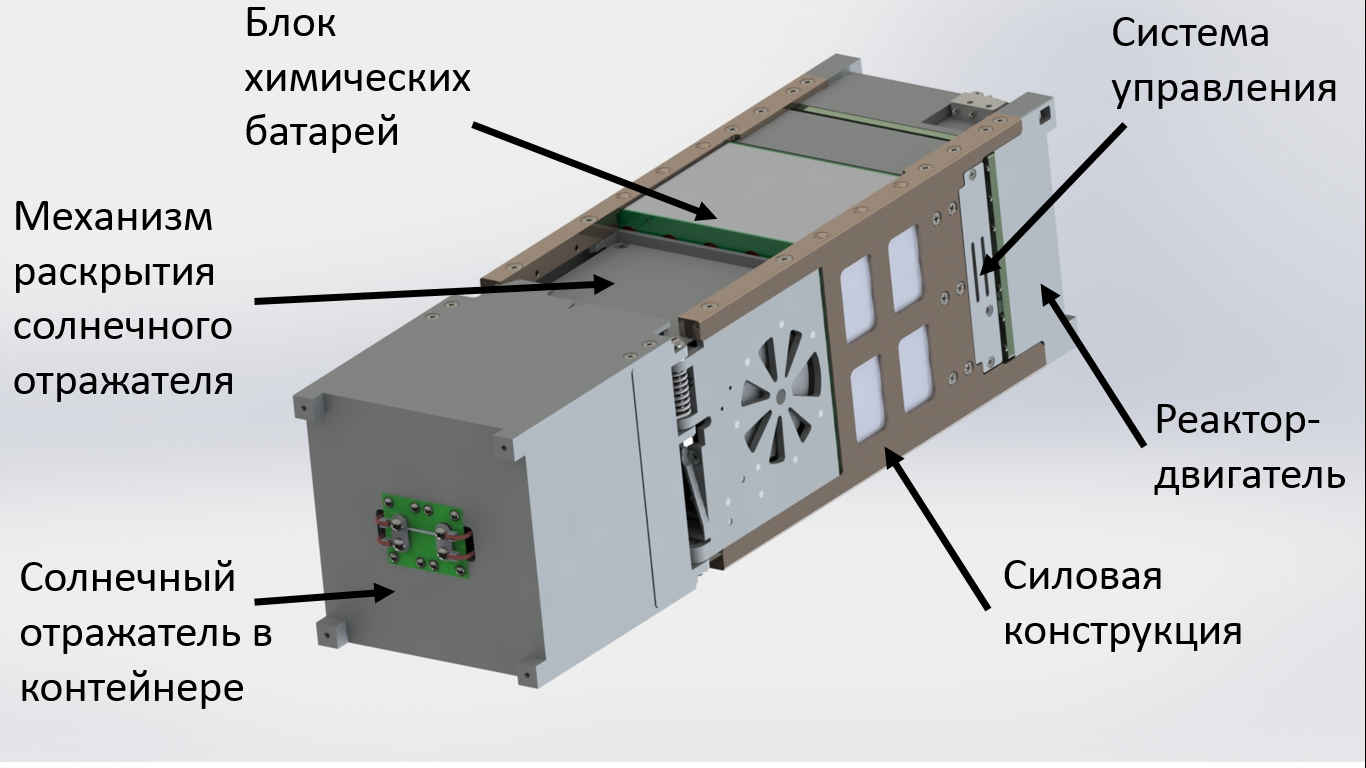The main purpose of Mayak is to prove in practice that space is closer and more affordable. However, the satellite has defined scientific objectives. Work on some of them started long ahead of the moment the satellite reaches the orbit.
First, it's an aerobraking system that will be used to de-orbit objects without a need for thrusters in the future. The idea is that low Earth orbit still has atmosphere, though extremely rarefied. Because of its drag, for example, the International Space Station has to periodically raise its orbit to a higher altitude. Satellites that come as low as 62 miles above Earth surface end up terminating their orbits.
The aerobraking system will allow satellites that are nearing their expiration to open a parachute-like structure made of extremely thin film and to reduce their altitude down to re-entry and to decay.
Similar film is used in Mayak to reflect sun rays. During a lab test, we realied that the initial unfolding mechanism didn't function properly. We planned on filling the pneumatic frame of the pyramid with gas, which in turn would spread the film. It turned out that the film has numerous microscopic pores that wouldn't keep the pressure even for a few days. Instead, we designed a mechanical skeleton that unfolds the film due to the extension of elastic edges previously would on a reel.
And this is undoubtful benefit for those who will be implementing aerobraking systems after us.
Second, tacking of Mayak's flight will help with some scientific computations. The pyramid of the satellite will become a reference for computation of apparent magnitude of other satellites. This means, scientists will be able to forecast how bright satellites will appear from Earth.
Third, observation of the satellite will tell us about the density of the outermost layers of the atmosphere. The capsule will be descending faster where density is higher, and slower where air is thinner.
